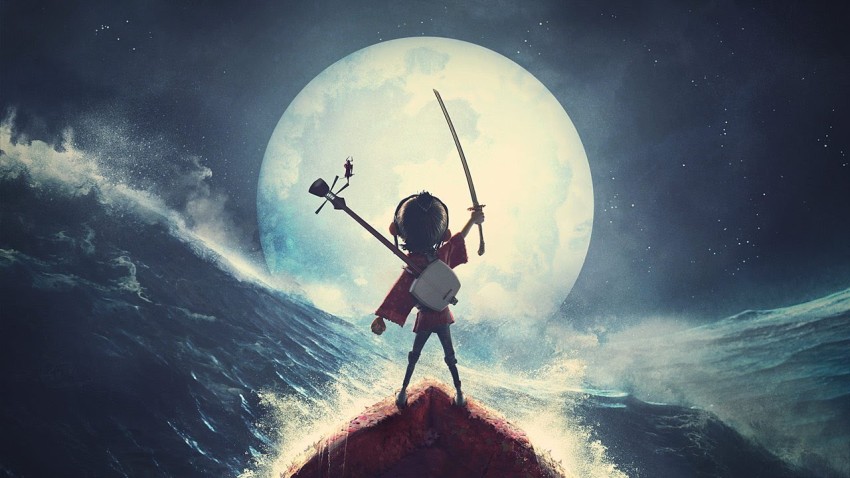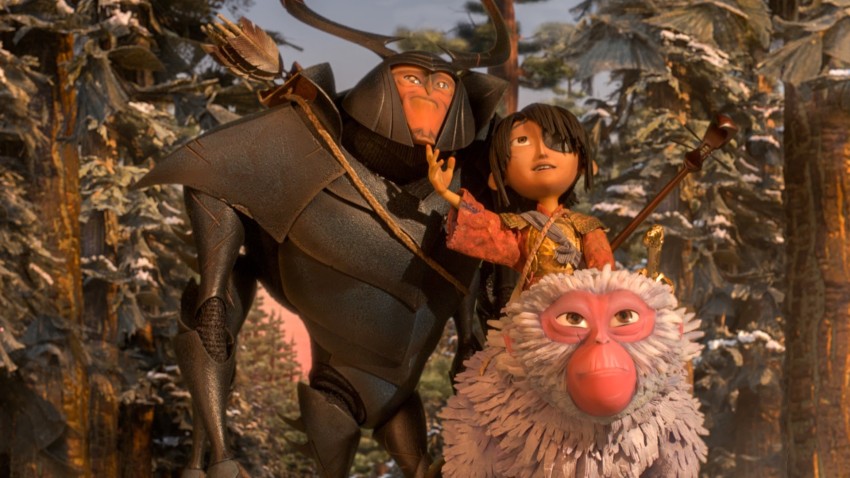Kubo and the Two Strings
September 6, 2016 · 0 comments
By Chris Perkins.
 Stop-motion studio Laika – based in Hillsboro, Oregon – first burst onto the scene in 2009 with Coraline. Based on the book by the legendary Neil Gaiman, and directed by The Nightmare Before Christmas’s Henry Selick, their debut had quite the pedigree. The studio really began to forge its own way after parting ways with Selick however, first with ParaNorman, and then with 2014’s Boxtrolls. Their fourth feature, arriving on UK cinema screens this September, sees them head into new territory, with Kubo and the Two Strings, set in feudal Japan.
Stop-motion studio Laika – based in Hillsboro, Oregon – first burst onto the scene in 2009 with Coraline. Based on the book by the legendary Neil Gaiman, and directed by The Nightmare Before Christmas’s Henry Selick, their debut had quite the pedigree. The studio really began to forge its own way after parting ways with Selick however, first with ParaNorman, and then with 2014’s Boxtrolls. Their fourth feature, arriving on UK cinema screens this September, sees them head into new territory, with Kubo and the Two Strings, set in feudal Japan.
Kubo is the directorial debut of Laika CEO and founder Travis Knight, and the second of the studio’s films not to be adapted from a book. The titular Kubo is a young boy who lives in a cave with his sickly mother. He regularly visits a nearby village, to entertain the locals with stories of his missing samurai father. One day, after failing to heed his mother’ s warning not to stay out after sunset, he finds himself on a quest to find his father’ s missing armour to protect himself from evil spirits.
Kubo and the Two Strings is an original story (devised by Shannon Tindle and Marc Haimes) and not directly inspired by any specific Japanese folktale. However, the influences of Japanese culture on the film (including of course anime) are pretty clear. Some observers have seen some parallels in the depiction of Japanese-style spirits and demons (yokai) to those in Ghibli films, most obviously Spirited Away and Princess Mononoke. Yet Laika’ s biggest influences go much further back, and come from outside the world of animation.
At its heart, Kubo and the Two Strings is rooted in samurai fiction, melded with other influences from Japan and elsewhere. There’s more than a hint of Journey to the West to the story too – although this time the monkey is a supporting character. The writers have cherry-picked elements from actual Japanese culture and mythology, and mixed in elements of their own creation to craft something fresh. Origami plays a key part in the film, with Kubo given the power to manipulate paper using his shamisen – the two stringed musical instrument of the title.
 Existing yokai from Japanese folklore feature – most notably the gargantuan skeleton or Gashadokuro. Other allusions are less direct – the significance of the main antagonist being the moon king creates a connection with the original folktale (and Isao Takahata film) The Tale of the Princess Kaguya. The film-makers also reference their favourite samurai flicks. Kubo’s father, for example, takes his name from the legendary warrior Hattori Hanzo.
Existing yokai from Japanese folklore feature – most notably the gargantuan skeleton or Gashadokuro. Other allusions are less direct – the significance of the main antagonist being the moon king creates a connection with the original folktale (and Isao Takahata film) The Tale of the Princess Kaguya. The film-makers also reference their favourite samurai flicks. Kubo’s father, for example, takes his name from the legendary warrior Hattori Hanzo.
The filmmakers acknowledge that their single biggest influence was Japanese woodblock artist Kiyoshi Saito (1907-1997). Saito’s works depicted everyday rural Japanese life and his influence was felt in every aspect of the film, from the concept art to the finished film. Within the film itself, this includes everything from the designs of the sets and props, to the framing of the shots. Laika homage Saito’s style in filling the film with “woodblock-style” textures, giving it a unique look among stop-motion features. Director Travis Knight explained as much to The Creator’ s Project stating that “Kiyoshi Saito was the key stylistic influence that was the unifying design element throughout the entire movie.”
 However, the production has attracted some criticism for not carrying its Asian influences over to the voice casting. Aside from some smaller roles (and a brief appearance from George Takei) the cast is full of white Hollywood stars such as Charlize Theron, Matthew McConaughey and Rooney Mara.
However, the production has attracted some criticism for not carrying its Asian influences over to the voice casting. Aside from some smaller roles (and a brief appearance from George Takei) the cast is full of white Hollywood stars such as Charlize Theron, Matthew McConaughey and Rooney Mara.
This melting pot of Eastern influences is combined with more familiar western ideas and tropes to create something quite unlike anything heretofore produced by a major Western animation studio. This mishmash of East and West, Old and New perfectly in line with Laika’ s whole approach. While they may be lauded by many for keeping this traditional art alive, they combine this with the use of digital, not only in the animation itself, but also in the production of the maquettes, for which the studio make extensive and pioneering use of 3D printing.
Whether it’s the Japanese angle or the envelope pushing animation that has your attention (or both), this promises to be one of the stand-out animation experiences in cinemas this year.
Chris Perkins writes about anime for MyM magazine and is the editor of Animation For Adults. Kubo and the Two Strings is in UK cinemas from 9th September.
Leave a Reply